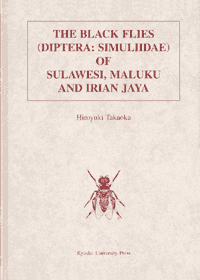Introduction
Black flies (Diptera: Simuliidae) are widely distributed in all zoogeographical regions. They are found almost anywhere with running water suitable as habitat for the immature stages. This family is one of the most important groups of blood-sucking insects. Female adults of some simuliid species have been known to be a pest of man and animals in many countries. Some species transmit several pathogens, such as filarioid nematodes of the genus Onchocerca to man and cattle, genus Dirofilaria to bear, and blood protozoans of the genus Leucocytozoon among birds. This monograph, one of several exploring the diversity of the Simuliidae in the Oriental and the Australasian Regions, documents the rich black-fly fauna of Sulawesi, Maluku and Irian Jaya in Indonesia. Eighty-seven species of black flies are treated, comprising 71 new species and 16 known species. All the species are assigned to the genus Simulium Latreille s. l. Species are placed in five subgenera – Wallacellum Takaoka (two spp.), Nevermannia Enderlein (four spp.), Gomphostilbia Enderlein (30 spp.), Morops Enderlein (29 spp.), and Simulium s. str. (22 spp.). Further groupings are made at the species-group level within the subgenera (except Wallacellum). The subgenera (except Nevermannia and Wallacellum) and most of the species-groups are revised and redefined. Keys to the subgenera, most species-groups and species are provided where possible for the adult females, males, pupae and mature larvae. Descriptions of all the new species and redescriptions for most of the known species are given, together with 220 figures of about 2,400 drawings. For each species, data are also included on the geographical distribution, aquatic habitats and natural infections in the larval stage with mermithids, microsporidans and fungi. A new checklist of the species of Simuliidae of the Oriental and the Australasian Regions is presented, together with maps showing their geographical distributions at genus, subgenus and species-group levels.


